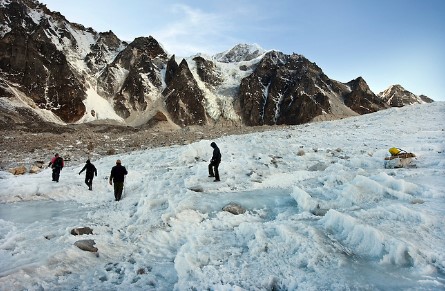To address the growing threats of climate change in the Himalayan region, the Sikkim Department of Science and Technology or DST has initiated a vital two-week scientific expedition to the East Rathong Glacier. This mission, which began recently, aims to enhance understanding of glacier dynamics and the potential dangers of Glacial Lake Outburst Floods or GLOFs.
The expedition is led by a team of esteemed scientists and researchers from the DST, equipped with advanced technology for precise data collection. Situated in Gyalshing district under Khangchendzonga National Park, at elevations ranging from 4,600 to 6,700 meters, the East Rathong Glacier is a focal point due to its high potential for GLOF events.
This mission follows the catastrophic floods of October 4, 2023, highlighting the urgency for thorough glacial research. The Sikkim State Climate Change Cell, part of the National Mission for Sustaining the Himalayan Ecosystem-NMSHE, has identified 19 potentially hazardous glacial lakes in Sikkim. The current expedition will not only examine the East Rathong Glacier but also conduct scientific studies of three high-risk glacial lakes: Rathong Lake, Bhaley Pokhari, and Tikip La Lake.
Key Objectives of the Expedition Include
Conducting bathymetric surveys of the three vulnerable glacial lakes,
Installing markers to monitor glacier movement,
Studying the vertical retreat of the East Rathong Glacier,
Analysing the glacio-hydrology of the East Rathong meltwater stream,
Upgrading and maintaining the automatic weather station at the glacier.
DST Secretary IFS Dr Sandeep Tambe highlighted the significance of proactive research in the face of climate change.
“The recent floods serve as a stark reminder of our vulnerabilities,” Dr Tambe stated. “Expeditions like this are crucial to fulfilling the Sikkim Government’s vision of a Sunaulo Sikkim, Samriddha Sikkim or Golden Sikkim, Prosperous Sikkim.”
The findings from this expedition are expected to not only enrich scientific understanding but also inform essential policies and strategies for climate change adaptation and disaster risk reduction across the Himalayan region.

















